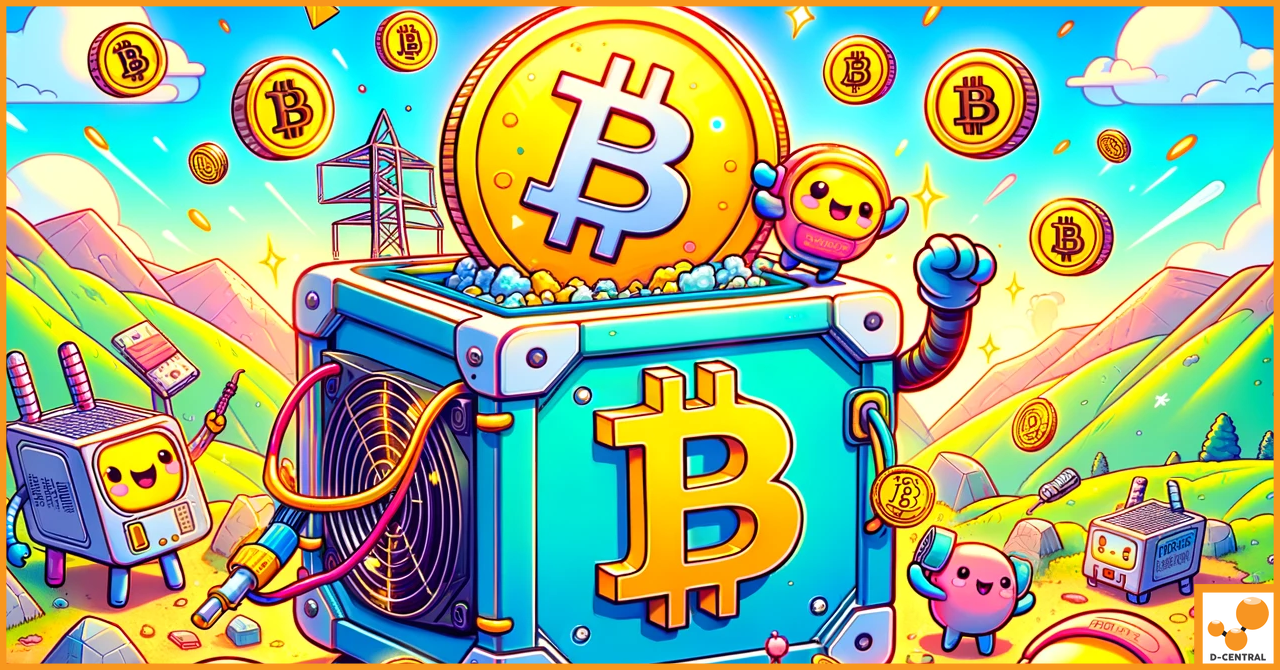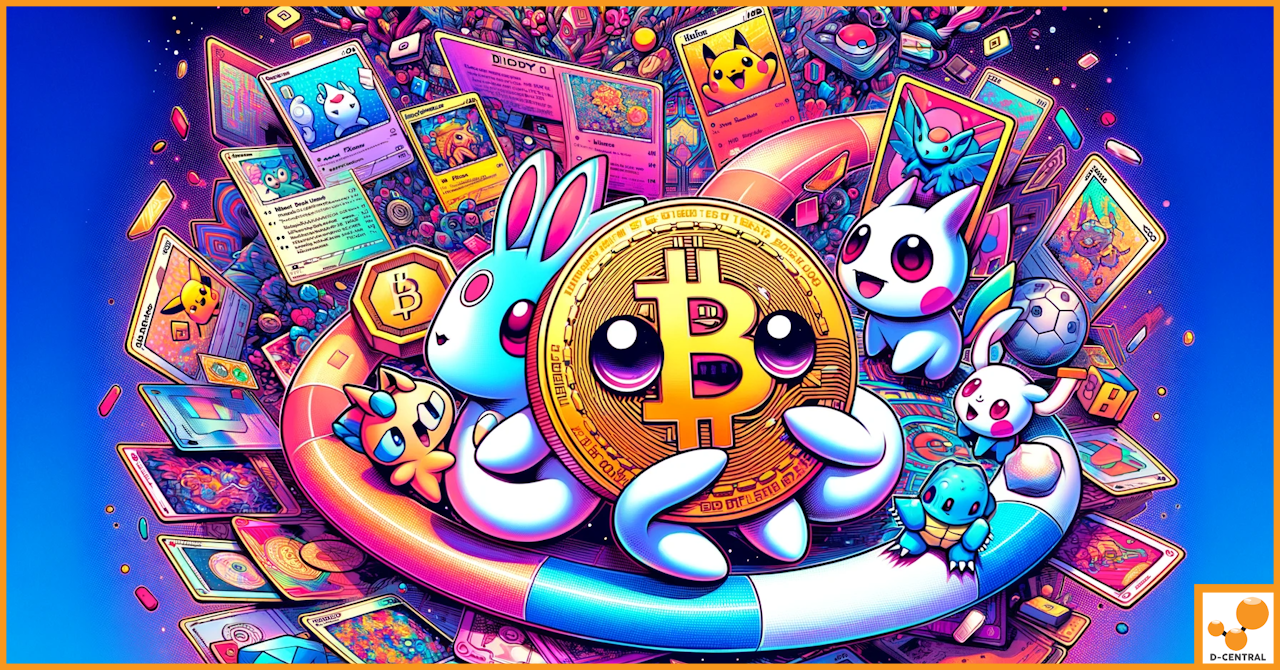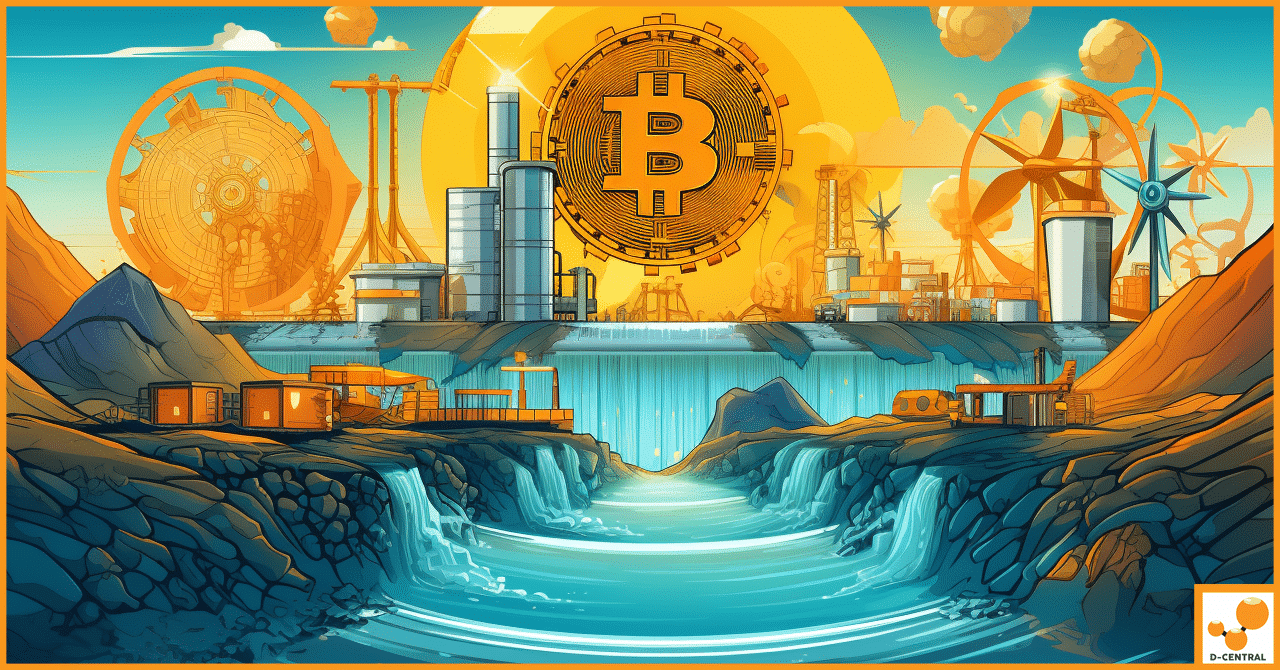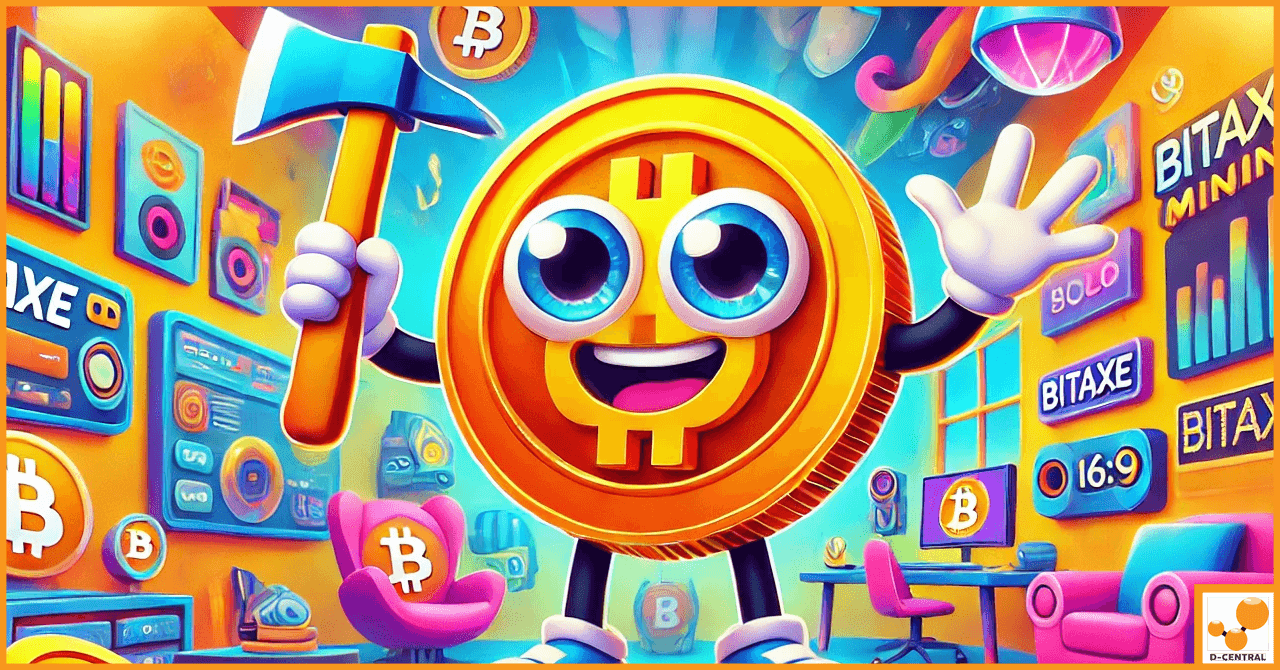
Power, Portability, and Performance: The Triple-P Advantages of Bitcoin Mining Containers
Cryptocurrency mining has rapidly evolved from a hobbyist activity into a sophisticated industrial operation. Initially accessible to individuals with basic
4479 Desserte Nord Autoroute 440, Laval, QC H7P 6E2

In a world constantly evolving with new ideas and technologies, understanding the dynamics that determine the longevity and relevance of these innovations is crucial. This is where the intriguing concept of the Lindy Effect comes into play. Originating from the realms of statistical theory and cultural observation, the Lindy Effect posits a simple yet profound idea: the future life expectancy of non-perishable items or ideas is proportional to their current age. Essentially, the longer something has been around, the longer it is likely to continue to exist.
In the realms of cryptocurrency and collectibles, a few examples resonate with the Lindy Effect as strongly as Bitcoin and Pokémon Cards. Bitcoin, the pioneering digital currency, has not only survived but thrived over a decade, continually adapting and gaining acceptance despite numerous challenges. Similarly, Pokémon Cards have transcended their origins as mere children’s playthings to become highly valued collectibles and investment assets, maintaining cultural relevance and value over many years.
At the forefront of supporting Bitcoin’s impressive journey is D-Central Technologies. As Canada’s premier ASIC repair center, we play a pivotal role in enhancing the resilience and longevity of Bitcoin mining operations. Our expertise in sourcing, hosting, and maintaining mining hardware, coupled with our ability to provide comprehensive mining support and outsourcing solutions, positions us uniquely to contribute to the ongoing saga of Bitcoin. By ensuring the optimal performance and prolonged life of mining hardware, we at D-Central Technologies are not just participants but key enablers in the story of Bitcoin, a prime example of the Lindy Effect in action.
The Lindy Effect, a concept that has intrigued minds across multiple disciplines, stands as a fundamental theory in understanding the longevity and resilience of non-perishable items, ideas, and technologies. The roots of this theory trace back to a quirky observation in a New York deli named Lindy’s, where comedians noted that the longer a Broadway show ran, the longer it could be expected to continue. This observation was eventually formalized into a broader concept by mathematicians and statisticians, notably Benoit Mandelbrot.
At its core, the Lindy Effect proposes that the future life expectancy of a non-perishable item is directly proportional to its current age. This means that the longer an idea, technology, or product has been around, the more likely it is to continue existing. It’s a concept that contradicts the traditional understanding that every additional period of survival decreases the remaining life expectancy. Instead, the Lindy Effect suggests that survival enhances the prospects of continued existence.
This theory has found application in numerous fields. In the domain of technology, it helps predict the longevity of various technologies and innovations. The tech world is rife with fleeting trends and rapidly obsolescing gadgets, yet some technologies defy these odds, staying relevant and useful over extended periods. The Lindy Effect helps in identifying these enduring technologies.
In cultural phenomena, the Lindy Effect is equally pertinent. Cultural trends, artistic movements, and even specific works of art or entertainment often face the test of time. Those that endure, gaining historical and cultural significance, are seen through the lens of this effect. It’s not just about the age of these cultural items but their ability to stay relevant and resonant with successive generations.
Applying this to Bitcoin and Pokémon Cards, we see two different realms where the Lindy Effect is vividly demonstrated. Bitcoin, as a pioneering digital currency, has weathered numerous storms since its inception in 2009. Its increasing adoption, resilience in the face of regulatory and market challenges, and growing integration into the financial landscape signal its enduring nature, consistent with the principles of the Lindy Effect. Pokémon Cards, on the other hand, emerged as part of a cultural phenomenon in the late 1990s. Their journey from children’s collectibles to valuable assets in the collectibles market shows a cultural endurance that aligns perfectly with the Lindy Effect.
Both Bitcoin and Pokémon Cards exemplify how ideas and products that can adapt, stay relevant, and continue to engage new audiences are likely to enjoy prolonged existence. This sets an intriguing stage for D-Central Technologies, as we align our services and expertise with these enduring phenomena, particularly in the realm of Bitcoin, ensuring its continued relevance and usability in the ever-evolving world of cryptocurrency.
Bitcoin’s journey since its inception in 2009 is a testament to its extraordinary resilience and adaptability, making it a prime example of the Lindy Effect in action. As a decentralized digital currency, Bitcoin was initially viewed with skepticism. However, over the years, it has not only survived various challenges but has also gained increasing acceptance and recognition, even among mainstream financial institutions.
The underlying principle of the Lindy Effect is that the longer something has been around, the longer it is likely to continue to exist. Bitcoin’s enduring presence, despite its volatility and the evolving regulatory landscape, demonstrates its robustness. Each year that Bitcoin continues to exist, operate, and gain acceptance, it strengthens the argument for its future longevity. Its adaptability is evident in its evolving technology, expanding user base, and integration into diverse financial and commercial systems.
The continuous improvement and adaptation of Bitcoin’s underlying technology are crucial to its longevity. Bitcoin’s blockchain technology, for example, has inspired a myriad of other applications and cryptocurrencies. This constant evolution and application in various domains further solidify Bitcoin’s relevance and staying power, in line with the Lindy Effect.
D-Central Technologies plays a significant role in supporting this enduring journey of Bitcoin. Our contributions to the Bitcoin ecosystem are multi-faceted:
By ensuring the longevity and efficacy of mining hardware, D-Central Technologies contributes directly to the sustainability and ongoing relevance of Bitcoin. Our services align perfectly with the ethos of the Lindy Effect, as we work to guarantee that Bitcoin, through its network and technology, continues to adapt, grow, and thrive in the ever-evolving digital landscape.
The fascinating world of Pokémon Cards offers a compelling parallel to Bitcoin, especially when viewed through the lens of the Lindy Effect. Just as Bitcoin has evolved and solidified its place in the financial world, Pokémon Cards have transcended their original purpose as a children’s game to become significant collectibles and investment assets, demonstrating remarkable cultural and financial endurance.
Cultural and Financial Endurance of Pokémon Cards
When Pokémon Cards first appeared in the late 1990s, they were primarily seen as part of a children’s game, tied to the broader Pokémon franchise. However, over the years, these cards have gained immense cultural significance, evolving into coveted collectibles with substantial financial value. This transition from a playful pastime to a serious investment mirrors the Lindy Effect, where the longer these cards have been in circulation, the more they have grown in value and cultural stature.
The surge in Pokémon Cards’ popularity and value is not merely a result of nostalgia or a fleeting trend. It reflects a deeper cultural phenomenon where items of pop culture gain significance over time, becoming part of a collective memory and experience. This enduring appeal is similar to how Bitcoin has progressively carved out its niche. Initially perceived as an experimental digital currency, Bitcoin has gained legitimacy and value, much like how Pokémon Cards have evolved from simple game pieces to valuable collectibles.
Parallel Between Pokémon Cards and Bitcoin
The parallel between Pokémon Cards and Bitcoin extends beyond their trajectory of increasing value and cultural significance. Both are decentralized in their own ways; while Bitcoin operates on a decentralized network free from central authority control, Pokémon Cards are traded in a vast, global, and decentralized community of collectors and enthusiasts.
Additionally, both Bitcoin and Pokémon Cards represent a new form of asset class in their respective domains. Bitcoin challenges traditional financial systems and offers an alternative form of investment and store of value. Similarly, Pokémon Cards have emerged as a non-traditional investment, appealing to a diverse range of collectors and investors who see value beyond their initial purpose.
Drawing a Comparison to Bitcoin’s Trajectory
Bitcoin’s trajectory, characterized by its resilience, adaptability, and increasing acceptance, can be seen paralleled in the journey of Pokémon Cards. Both have navigated skepticism and volatility to emerge as respected assets in their fields. The consistent increase in the value and demand for rare Pokémon Cards, much like the appreciation of Bitcoin, is a testament to their enduring appeal and the trust placed in them by their respective communities.
Pokémon Cards, much like Bitcoin, exemplify the Lindy Effect in their respective spheres. Their journey from humble beginnings to becoming valuable and respected assets underscores the power of cultural and financial endurance. The parallel trajectories of these two seemingly different entities highlight the diverse applications of the Lindy Effect and its relevance in understanding the dynamics of value, culture, and investment in the modern world.
Understanding the Lindy Effect can be a game-changer for investors and enthusiasts alike, particularly in the realms of Bitcoin and Pokémon Cards. This concept offers a unique perspective on assessing long-term value and potential, guiding strategies in both investment and collection. By recognizing the principles of endurance and adaptability inherent in the Lindy Effect, individuals can make more informed decisions, aligning their interests with entities that have proven their resilience over time.
Guiding Investment Strategies in Bitcoin
For investors in the cryptocurrency space, particularly in Bitcoin, the Lindy Effect suggests a focus on long-term potential rather than short-term fluctuations. Bitcoin’s increasing acceptance and integration into the financial ecosystem, along with its proven durability over more than a decade, signal its potential for continued relevance and value. Investors, therefore, might consider a long-term hold strategy, recognizing that Bitcoin’s past endurance enhances its prospects for future longevity.
Furthermore, the Lindy Effect can inform decisions about diversification within the cryptocurrency portfolio. While new and emerging cryptocurrencies may offer tempting growth prospects, Bitcoin’s established track record provides a comparative assurance of stability and enduring value. This doesn’t mean avoiding new entrants but rather balancing the portfolio with a weighted consideration towards proven entities like Bitcoin.
Collection Strategies in Pokémon Cards
In the world of collectibles, particularly Pokémon Cards, understanding the Lindy Effect can guide collectors in identifying cards that are likely to retain or increase in value over time. Cards that have already demonstrated enduring popularity and cultural significance are likely to continue being valuable. Collectors might focus on rare, first-edition, or historically significant cards, understanding that their continued relevance in the collective cultural consciousness can translate to sustained or increased financial value.
The Lindy Effect also encourages collectors to think about the cultural impact and nostalgia associated with Pokémon Cards. Those that have a significant place in the collective memory of a generation or are part of key cultural moments are more likely to retain their appeal and value.
Importance of Backing Enduring Technologies and Collectibles
For both investors in Bitcoin and collectors of Pokémon Cards, the Lindy Effect underscores the importance of backing enduring technologies and collectibles. In a rapidly changing world, choosing to invest in or collect items that have demonstrated resilience and adaptability is a strategy that aligns with long-term success and satisfaction.
Investing in Bitcoin, for instance, is not just about financial gains but also about supporting a technology that has the potential to transform financial systems. Similarly, collecting Pokémon Cards is about more than accruing valuable items; it’s about preserving a piece of cultural history that has stood the test of time.
The Lindy Effect offers valuable insights for both investors and enthusiasts. By focusing on entities that have demonstrated longevity and adaptability, such as Bitcoin and Pokémon Cards, individuals can align their strategies with the principles of endurance and value retention, setting themselves up for potentially greater long-term success and fulfillment.
D-Central Technologies has established itself as a pivotal player in reinforcing the longevity and resilience of Bitcoin, aligning perfectly with the principles outlined by the Lindy Effect. Our suite of services and solutions plays a crucial role in ensuring the continuous operation and efficiency of Bitcoin mining, which is at the heart of Bitcoin’s functionality and value.
Reinforcing Bitcoin’s Longevity Through Services
At D-Central, our comprehensive range of services caters to various aspects of the Bitcoin mining ecosystem:
Showcasing Testimonials and Achievements
Our expertise and dedication in the field of Bitcoin mining are reflected in the positive testimonials and reviews from our clients. Customers consistently praise our quick and efficient repair services, the reliability of our hosting solutions, and the quality of our refurbished hardware. These testimonials highlight our commitment to customer satisfaction and our role as a trusted partner in the Bitcoin mining industry.
Emphasizing D-Central’s Trustworthiness and Expertise
D-Central Technologies’ reputation as a leader in the Bitcoin mining industry is not just a claim but a status earned through consistent performance and innovation. Our achievements include:
In conclusion, D-Central Technologies stands at the forefront of supporting Bitcoin’s future. Our services and solutions not only reinforce the longevity of Bitcoin but also demonstrate our unwavering commitment to the cryptocurrency ecosystem. As Bitcoin continues to exemplify the Lindy Effect through its adaptability and increasing acceptance, D-Central Technologies remains dedicated to enhancing its resilience and accessibility for all participants in this dynamic field.
In this exploration of the Lindy Effect, we’ve delved into how this intriguing concept applies to both Bitcoin and Pokémon Cards, two seemingly disparate entities that demonstrate remarkable resilience and enduring value. The Lindy Effect, with its focus on the longevity of non-perishable items and ideas, offers a unique lens through which we can understand the dynamics of these modern investments.
In this evolving landscape, D-Central Technologies plays a crucial role. As a leader in the Bitcoin mining industry, our services – from ASIC repair to hosting solutions and the provision of refurbished hardware – not only support Bitcoin’s infrastructure but also contribute significantly to its ongoing relevance and durability. Our expertise and dedication to innovation ensure that Bitcoin continues to thrive, in line with the principles of the Lindy Effect.
Understanding the Lindy Effect is crucial for anyone looking to invest in Bitcoin or collect Pokémon Cards. It encourages a focus on entities that have demonstrated the ability to withstand the test of time and adapt to changing conditions. By choosing investments with a proven track record of endurance, investors and collectors can align themselves with opportunities that have a greater likelihood of long-term success.
To learn more about how D-Central Technologies supports the enduring nature of Bitcoin and to explore our range of services, we invite you to visit our website. Discover how our expertise can assist you in your Bitcoin mining endeavors, whether you are starting out or looking to optimize your existing operations. Join us in pioneering the future of Bitcoin and ensuring its continued relevance in the digital age.
What is the Lindy Effect?
The Lindy Effect is a theory that the future life expectancy of non-perishable items or ideas is proportional to their current age. The concept suggests that the longer something has been around, the more likely it is to continue to exist.
How does the Lindy Effect apply to Bitcoin and Pokémon Cards?
The Lindy Effect applies to Bitcoin and Pokémon Cards by suggesting that their long-standing presence and continued cultural relevance and value indicate potential for prolonged existence and sustainability.
What role does D-Central Technologies play in Bitcoin’s journey?
D-Central Technologies is a pivotal player in supporting the resilience and longevity of Bitcoin mining operations through ASIC repair, hosting solutions, refurbished hardware, and customized mining solutions.
How does the Lindy Effect inform investment and collection strategies?
The Lindy Effect guides investment strategies by suggesting a focus on long-term potential and proven endurance. For collections like Pokémon Cards, it advises concentrating on items with demonstrated historical and cultural significance, which are more likely to retain value over time.
What services does D-Central Technologies offer for Bitcoin mining?
D-Central Technologies offers services including ASIC repair, mining hosting solutions, provision of refurbished hardware, and customized mining solutions to support Bitcoin’s mining infrastructure and community.
How has Bitcoin demonstrated the Lindy Effect in its evolution?
Bitcoin has demonstrated the Lindy Effect through its resilience, adaptability, and increasing acceptance which points to a greater likelihood of continued relevance and value in the future.
Can the Lindy Effect help in making more informed investment decisions?
Yes, the Lindy Effect can help investors make more informed decisions by focusing on entities with a proven track record, thereby aligning with opportunities that may have greater long-term success.
How can I learn more about D-Central Technologies’ contributions to Bitcoin mining?
You can visit the D-Central Technologies website to discover more about their contributions to Bitcoin mining and how their services can assist with your Bitcoin mining endeavors.
DISCLAIMER: D-Central Technologies and its associated content, including this blog, do not serve as financial advisors or official investment advisors. The insights and opinions shared here or by any guests featured in our content are provided purely for informational and educational purposes. Such communications should not be interpreted as financial, investment, legal, tax, or any form of specific advice. We are committed to advancing the knowledge and understanding of Bitcoin and its potential impact on society. However, we urge our community to proceed with caution and informed judgment in all related endeavors.
Related Posts

Cryptocurrency mining has rapidly evolved from a hobbyist activity into a sophisticated industrial operation. Initially accessible to individuals with basic

Bitcoin mining, the process of validating transactions and securing the Bitcoin network, has become a cornerstone of the cryptocurrency ecosystem.

Are you ready to take control of your cryptocurrency mining journey? Look no further than the Bitaxe series from D-Central